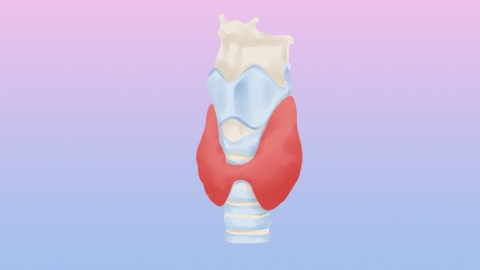Which benign thyroid nodules require surgical treatment?
Surgery is indicated for benign thyroid nodules when they are large enough to compress surrounding tissues, show rapid growth suggestive of malignancy, cause significant clinical symptoms, affect appearance with patient concern, or are associated with abnormal thyroid function unresponsive to medication. If any abnormalities occur, prompt medical evaluation is recommended. Detailed explanations are as follows:

1. Large size causing compression of surrounding structures: When a nodule continues to grow and compresses the trachea, esophagus, or recurrent laryngeal nerve, it may lead to difficulty breathing, swallowing problems, or hoarseness. If conservative treatment fails to relieve these compressive symptoms, surgical removal of the nodule is necessary to alleviate pressure on surrounding tissues and restore normal physiological function.
2. Rapid growth suspicious for malignant transformation: A nodule that grows significantly in a short period, especially with ultrasound findings such as ill-defined borders, calcifications, or increased vascularity, may carry a risk of malignancy—even if initial pathology results classify it as benign. To prevent disease progression, surgical excision is recommended to both treat the lesion and obtain a definitive diagnosis.
3. Causing significant clinical symptoms: When a nodule develops complications such as hemorrhage or infection, it may result in local pain, swelling, or symptoms related to goiter—such as neck discomfort or a noticeable foreign body sensation—impacting daily life. If symptoms persist despite medical therapy, surgical intervention is warranted to relieve them.
4. Affecting appearance with patient request: Nodules located on the surface of the thyroid gland that are large enough to cause visible bulging or distortion of the neck can severely impact cosmetic appearance. In cases where patients express strong desire for aesthetic improvement and have no contraindications to surgery, resection can be performed to improve neck appearance.
5. Associated thyroid dysfunction unresponsive to medication: When nodules are accompanied by hyperthyroidism or hypothyroidism, and long-term drug therapy fails to effectively control thyroid function—or when patients cannot tolerate medication side effects—surgical removal of the affected nodule(s) may be required to stabilize thyroid function and prevent disease recurrence.
After detection of a thyroid nodule, regular ultrasound follow-ups are essential to monitor changes in size and morphology. If any of the above conditions develop, timely medical evaluation should be sought to assess the need for surgery.








